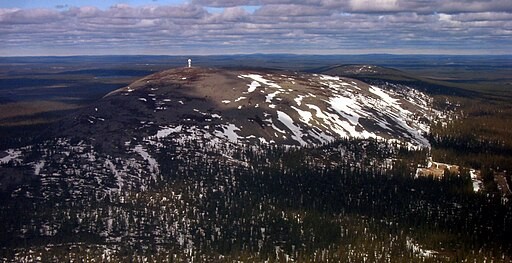The Earth is covered by an outer layer of solid rocks called crust. According to the Plate Tectonics Theory, this crust is divided into huge, constantly moving sections. A recent study suggests that this dense covering may have begun moving about 3.8 billion years ago.

(Photo: Wikimedia Commons/ J-P Kärnä)
Ancient Segment of Earth's Crust
At the University of Copenhagen, a team of researchers conducted a geological study in a secluded Finnish outcrop, which revealed the oldest Scandinavian bedrock. Nestled between some of the oldest mountains in Northern Europe are traces of previously hidden parts of the Earth's crust.
These traces were discovered in zircon, a primary accessory mineral in most granitic rocks, upon which the foundation of Denmark and Scandinavia was believed to rest. The zircon crystals found in river sand and pebbles in Finland were assumed to be older than anything ever seen in Scandinavia.
Researchers from the Department of Geosciences and Natural Resource Management conducted three different isotope analyses on the bedrock. They discovered that this foundation originated from Greenland approximately 3.75 billion years ago. This means the oldest part of the Earth's crust is about 250 million years older than previously thought. A study of the mineral also showed that t, in several ways, the chemical fingerprint of zircon matches those of some of the oldest rocks on Earth found in the North Atlantic Craton in West Greenland.
A Water World Without Oxygen
Finland, Norway, Sweden, and Denmark restored a part of the planet's crust called the Fennoscandian Shield or Baltic Shield. Scientists proposed that this segment broke away from Greenland as a "seed" and shifted for hundreds of millions of years until it "took root" in the spot where Finland is today.
As new geological material accumulated, the plate grew until it became Scandinavia. When the crust detached from Greenland, the Earth looked very different than today.
According to Professor Tod Waight, the Earth was probably a watery plane without oxygen in the atmosphere and an emergent crust. Since that is so far back in time, scientists cannot be sure what it actually looked like.
Earth has a continental crust composed of granite, which is quite remarkable when observed from space and compared with other planets in the Solar System. This property is unique in our galactic neighborhood. Liquid water and a granite crust are critical factors in identifying habitable exoplanets and the possibility of life outside the Earth.
The new study adds pieces to an ancient continental puzzle that began long before life on Earth thrived. Moreover, it contributed to a growing number of studies that reject the means used to calculate the growth of continents.
The most commonly used models suggest that the Earth's continental crust started to exist when the planet was formed approximately 4.6 billion years ago. Recent studies indicate that the chemical signatures showing the growth of continental crust can only be identified about a billion years later. This means that experts may need to revise much of what they thought about the evolution of early continents.
RELATED ARTICLE: Earth Evolution: Geologists Reveal This Planet Could Further Evolve into Massive Supercontinents in 200 Million Years
Check out more news and information on Tectonic Plates in Science Times.



![Earth's Quasi-Moon Kamo‘oalewa Could Originate From Lunar Surface Not Asteroid Belt [Study]](https://1721181113.rsc.cdn77.org/data/thumbs/full/53275/89/56/50/40/earths-quasi-moon-kamo-oalewa-could-originate-from-lunar-surface-not-asteroid-belt-study.png)










